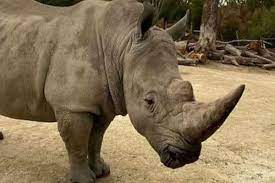Today Current Affairs: 4th November 2022 for UPSC IAS exams, State PSC exams, SSC CGL, State SSC, RRB, Railways, Banking Exam & IBPS, etc
Table of Contents
Performance Grading Index (PGI) For 2020-21:

The Ministry of Education has recently released the Performance Grading Index (PGI) for States and Union Territories for 2020-21.
- It is a unique index for evidence-based comprehensive analysis of school education systems across States and UTs.
- The prime objective of PGI is to promote evidence-based policy-making and highlight course correction to ensure quality education for all.
- As per the index, a total of seven States and Union Territories namely Kerala, Punjab, Chandigarh, Maharashtra, Gujarat, Rajasthan, and Andhra Pradesh have attained Level -2 grading in 2020-21.
- Gujarat, Rajasthan, and Andhra Pradesh are the new entrants with the highest achieved level.
- Union Territory Ladakh has made significant improvements in PGI from Level 8 to Level 4 in 2020-21.
- No state, however, has been able to attain the highest level of L1 so far.
- PGI 2020-21 classified the States and UTs into ten grades of which the highest achievable Grade is Level 1 for the states scoring more than 950 points out of a total of 1000 points.
- The lowest grade is Level 10 which is for a score below 551.
Ballistic Missile Defence (BMD) Interceptor AD-1 Missile:

Defence Research & Development Organisation (DRDO) has recently conducted a successful maiden flight-test of Phase-II Ballistic Missile Defence (BMD) interceptor AD-1 missile from APJ Abdul Kalam Island off the coast of Odisha.
- The AD-1 is a long-range interceptor missile designed for both low exo-atmospheric and endo-atmospheric interception of long-range ballistic missiles as well as aircraft.
- It is propelled by a two-stage solid motor and equipped with indigenously-developed advanced control system, navigation and guidance algorithm to precisely guide the vehicle to the target that move at very high speeds.
- The fully functional ballistic missile defence system contained high-power radars and could potentially protect large areas from the adversary missile or other air attacks.
Anti-ballistic missiles:
- The development of anti-ballistic missiles is said to have started by the DRDO around the 2000s in view of the development of ballistic assets by Pakistan and China.
- The phase-1 of the programme is said to have been completed towards the end of 2010s and consisted of the advanced air defence systems and air defence systems based on the Prithvi missile.
- The second phase, according to sources, focuses on the development of anti-ballistic defence systems like the US’s Theatre High-Altitude Area Defence system, which can neutralise intermediate-range ballistic missiles.
- The AD-II, which is capable of neutralising missiles of even higher ranges, is also said to be under development.
The International Day For Biosphere Reserves:

November 3 will be the first ‘The International Day for Biosphere Reserves’, to be celebrated beginning 2022.
- Biosphere Reserve (BR) is an international designation by UNESCO for representative parts of natural and cultural landscapes extending over large area of terrestrial or coastal/marine ecosystems or a combination thereof.
- They are sites for testing interdisciplinary approaches to understanding and managing changes and interactions between social and ecological systems, including conflict prevention and management of biodiversity.
- Biosphere reserves are nominated by national governments and remain under the sovereign jurisdiction of the states where they are located.
- The World Network of Biosphere Reserves (WNBR) was formed in 1971, as a backbone for biodiversity conservation, ecosystem restoration, and living in harmony with nature.
- The World Network of Biosphere Reserves of the MAB Programme consists of a dynamic and interactive network of sites of excellence.
- The World Network of Biosphere Reserves promotes North-South and South-South collaboration and represents a unique tool for international co-operation through sharing knowledge, exchanging experiences, building capacity and promoting best practices.
- There are now 738 properties in 134 countries, including 12 in India, four in Sri Lanka, and three in the Maldives.
- In South Asia, over 30 biosphere reserves have been established.
- The first one was the Hurulu Biosphere Reserve, in Sri Lanka, with 25,500 hectares of tropical dry evergreen forest.
- In India, the first biosphere reserve was designated by UNESCO in 2000, namely, the blue mountains of the Nilgiris stretching over Tamil Nadu, Karnataka and Kerala.
Coronal Holes Spotted On The Sun:

A phenomenon called “coronal holes” was recently spotted on the sun.
- These are regions on the sun’s surface from where fast solar wind gushes out into space. Because they contain little solar material, they have lower temperatures and thus appear much darker than their surroundings.
- Here, the magnetic field is open to interplanetary space, sending solar material out in a high-speed stream of solar wind.
- Coronal holes can last between a few weeks to months.
- The holes are not a unique phenomenon, appearing throughout the sun’s approximately 11-year solar cycle.
- They can last much longer during solar minimum – a period of time when activity on the Sun is substantially diminished, according to NASA.
- While it is unclear what causes coronal holes, they correlate to areas on the sun where magnetic fields soar up and away, without looping back down to the surface as they do elsewhere.
- These ‘coronal holes’ are important to understanding the space environment around the earth.
- Scientists study these fast solar wind streams because they sometimes interact with earth’s magnetic field, creating what’s called a geomagnetic storm, which can expose satellites to radiation and interfere with communications signals.
Two-Finger Test:

The Supreme Court recently said that those conducting the ‘two-finger test’ on alleged rape victims will be held guilty of misconduct.
- A woman who has been sexually assaulted undergoes a medical examination for ascertaining her health and medical needs, collection of evidence, etc.
- The two-finger test, carried out by a medical practitioner, involves the examination of her vagina to check if she is habituated to sexual intercourse.
- The practice is unscientific and does not provide any definite information. Moreover, such ‘information’ has no bearing on an allegation of rape.
- A handbook released by the World Health Organization (WHO) on dealing with sexual assault victims says, “There is no place for virginity (or ‘two-finger’) testing; it has no scientific validity”.
- In 2004 SC observed that whether a woman is ‘habituated to sexual intercourse’ or ‘habitual to sexual intercourse’ is irrelevant for the purposes of determining whether the ingredients of Section 375 (rape) of the IPC are present in a particular case.
- In 2013, the SC court had held that the two-finger test violates a woman’s right to privacy and asked the government to provide better medical procedures to confirm sexual assault.
Paediatric Rare Genetic Disorders (PraGeD):

The Centre for DNA Fingerprinting and Diagnostics (CDFD), Hyderabad has initiated an inter-disciplinary approach to decode the genetic mutations that causes Pediatric Rare Genetic Disorders (PRaGeD).
- The ‘Mission on Paediatric Rare Genetic Disorders (PraGeD)’ is a PAN-India initiative funded by the Department of Biotechnology (DBT), Ministry of Science and technology, Government of India.
- The centre will be collaborating with paediatrics departments of medical colleges besides, DBT’s own diagnostic centres set up under the Unique Methods of Management of Inherited Disorders (UMMID) programme and others across India to analyse samples from children with rare genetic disorders and their parents.
- CDFD is developing a state of the art facility to study the Pediatric Rare Genetic Diseases.
- Scientists at the CDFD will perform high-throughput Whole Exome Sequencing (WES)/ Whole Genome Sequencing (WGS), analysis of sequence data, functional validation of the novel genes/variants, a database of phenotype-genotype to determine which gene/mutation(s) cause rare disease condition
- The rare genetic diseases are a global public health concern with 350 million people affected worldwide and about 70 million Indians.
- They are common in South Asia and underestimated.
- About 95% of the rare genetic diseases do not have a single approved drug for treatment with about 30% children suffering and many may not live till the age of five.
C-295 Transport Aircraft:

Prime Minister of India has laid the foundation stone for the C-295 transport aircraft manufacturing facility in Vadodara to be set up by Airbus Defence and Space S.A., Spain and Tata Advanced Systems Limited (TASL).
- This is the first time a private sector company would be manufacturing a full aircraft in the country.
- The C-295 is a transport aircraft of 5-10 tonne capacity with contemporary technology.
- Robust and reliable, it is a versatile and efficient tactical transport aircraft which can perform a number of different missions.
- The aircraft, with a flight endurance of up to 11 hours, can carry out multi-role operations under all weather conditions.
- It can routinely operate day as well as night combat missions from desert to maritime environments.
- It has a rear ramp door for quick reaction and para dropping of troops and cargo. Short take-off/land from semi-prepared surfaces is another of its features.
- It will replace the Indian Air Force’s ageing fleet of Avro-748 planes.
- The Avro-748 planes are a British-origin twin-engine turboprop, military transport and freighter with a 6-tonne freight capacity.
Niveshak Didi Initiative:

India Post Payments Bank (IPPB) conducted India’s First Floating Financial Literacy Camp with an initiative called ‘Niveshak Didi’ to promote Financial Literacy ‘By the women, for the women’, in Srinagar, J&K.
- Niveshak Didi Initiative is based on the ideology of women for women, as rural area women feel more comfortable to share their queries with a female herself.
- It is launched by IPPB, in collaboration with Investor Education and Protection Fund Authority (IEPFA) under the aegis of Ministry of Corporate Affairs (MCA).
- The session covered topics ranging from banking and financial products, importance of joining the mainstream financial services offered by regulated entities & protection against various types of risks involved with investments and measures of fraud prevention.
India Post Payments Bank (IPPB):
- It has been established under the Department of Posts, Ministry of Communication with 100% equity owned by the Government of India.
- The bank has been set up with the vision to build the most accessible, affordable and trusted bank for the common man in India.
Ela Ramesh Bhatt : Gandhian Activist

Ela Ramesh Bhatt, popularly known as Elaben, a noted Gandhian, leading women’s empowerment activist, and renowned founder of the Self-Employed Women’s Association (SEWA) passed away recently.
- Born in Ahmedabad in 1933, she studied law and joined the legal cell of the Majur Mahajan Sangh or the Textile Labour Association (TLA).
- Bhatt founded SEWA in 1972, which has since worked at empowering women in various ways.
- She was felicitated with the Padma Shri, the Padma Bhushan, the Ramon Magsaysay Award, the Indira Gandhi Peace Prize and many other accolades.
- She was also a Member of the Rajya Sabha and of the Planning Commission of India in the 1980s.
- She served as a World Bank advisor and addressed the United Nations General Assembly.
- She propounded the idea of ‘hundred-mile communities’ in her book Anubandh: Building Hundred-Mile Communities published in 2015.
Rhino Horns Are Shrinking:

According to a study, published in the latest edition of People and Nature by the British Ecological Society, the horns of rhinoceroses may have become smaller over time from the impact of hunting.
- One-horned Rhinos Also known as Indian rhino, it is the largest of the rhino species.
- It is identified by a single black horn and a grey-brown hide with skin folds.
- They primarily graze, with a diet consisting almost entirely of grasses as well as leaves, branches of shrubs and trees, fruit, and aquatic plants.
- Protection status:
- IUCN Red list: Vulnerable
- Wildlife Protection Act, 1972: Schedule I.
- Convention on International Trade in Endangered Species of Wild Fauna and Flora (CITES): Appendix I




